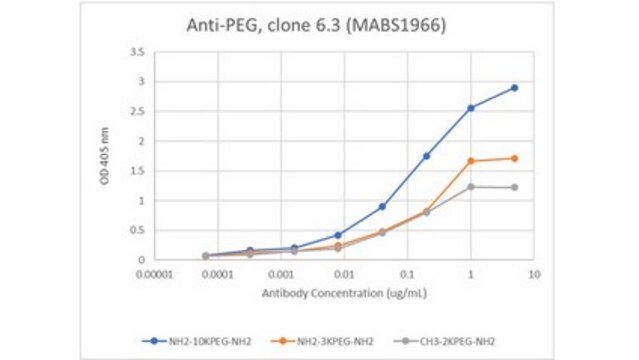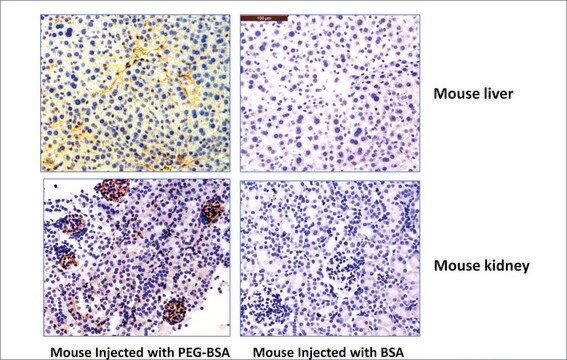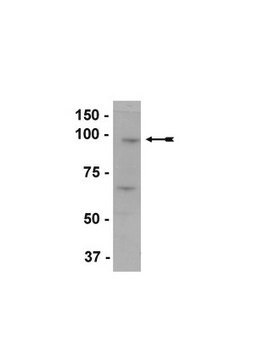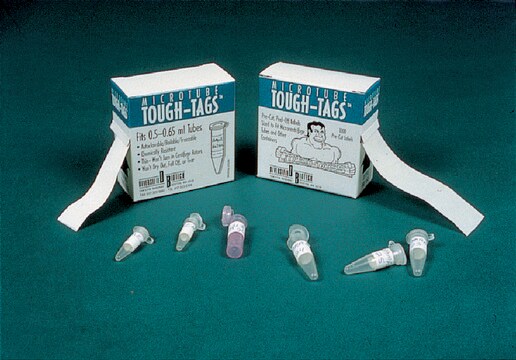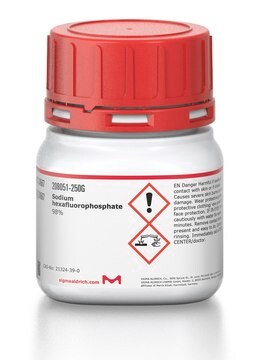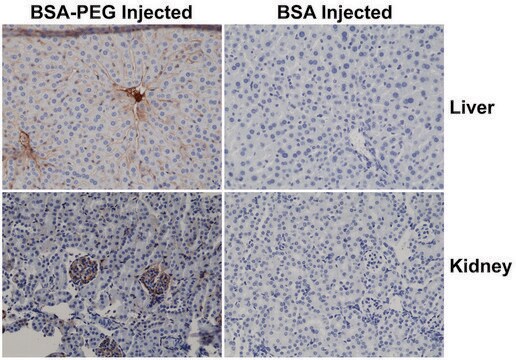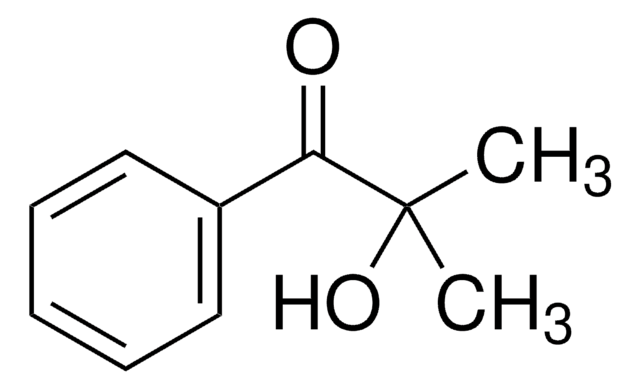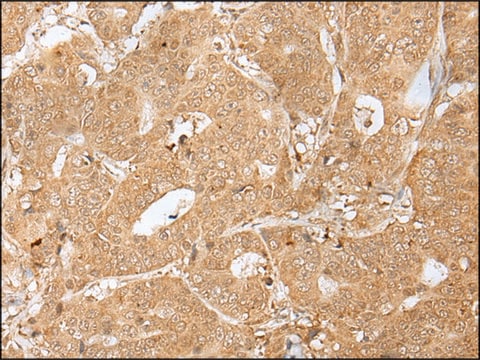MABS1214
Anti-PEG (methoxy group) Antibody, clone RM105
clone RM105, from rabbit, purified by affinity chromatography
Sinônimo(s):
PEG, pegylation, methoxy group, Polyethylene glycol, polyethylene oxide, PEO, polyoxyethylene, POE
About This Item
IHC
WB
immunohistochemistry: suitable
western blot: suitable
Produtos recomendados
fonte biológica
rabbit
Nível de qualidade
forma do anticorpo
purified immunoglobulin
tipo de produto de anticorpo
primary antibodies
clone
RM105, monoclonal
purificado por
affinity chromatography
reatividade da espécie (prevista por homologia)
all
técnica(s)
ELISA: suitable
immunohistochemistry: suitable
western blot: suitable
Isotipo
IgG
Condições de expedição
wet ice
modificação pós-traducional do alvo
unmodified
Descrição geral
Imunogênio
Aplicação
ELISA Analysis: Multiple concentrations of this antibody was used to detect three different BSA-PEG conjugates (5K, 40K and 40K branched)
Signaling
Epitope Tags
Qualidade
Western Blotting Analysis: A 1:1;000 dilution of this antibody detected PEG (methoxy group) on conjugated recombinant BSA
Descrição-alvo
forma física
Armazenamento e estabilidade
Outras notas
Exoneração de responsabilidade
Não está encontrando o produto certo?
Experimente o nosso Ferramenta de seleção de produtos.
Código de classe de armazenamento
12 - Non Combustible Liquids
Classe de risco de água (WGK)
WGK 2
Ponto de fulgor (°F)
Not applicable
Ponto de fulgor (°C)
Not applicable
Certificados de análise (COA)
Busque Certificados de análise (COA) digitando o Número do Lote do produto. Os números de lote e remessa podem ser encontrados no rótulo de um produto após a palavra “Lot” ou “Batch”.
Já possui este produto?
Encontre a documentação dos produtos que você adquiriu recentemente na biblioteca de documentos.
Nossa equipe de cientistas tem experiência em todas as áreas de pesquisa, incluindo Life Sciences, ciência de materiais, síntese química, cromatografia, química analítica e muitas outras.
Entre em contato com a assistência técnica